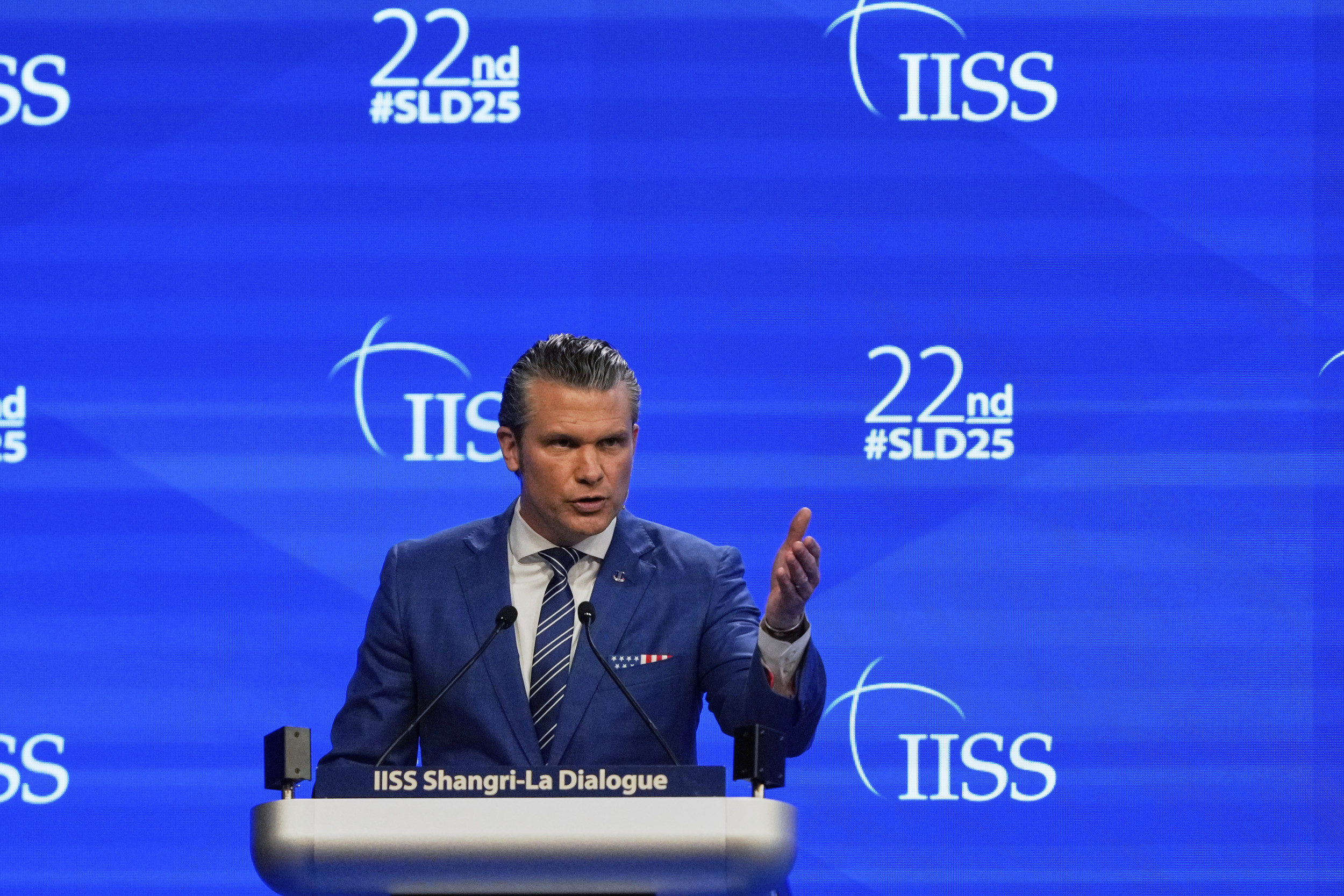🎙️ Voice is AI-generated. Inconsistencies may occur.
Four High Mobility Artillery Rocket Systems—better known as HIMARS—are "the highlight" of a new $625M security package the U.S. is sending to Kyiv to help Ukrainian troops continue to "weaken" Russia. Those were the words of Laura K. Cooper, deputy assistant secretary of defense, during a Pentagon press conference on Tuesday.
HIMARS have become a key tool in the hands of Ukrainian troops, allowing Kyiv's armed forces to strike key targets used by Russians to supply its troops.
With the latest package, the U.S. will have sent a total of 20 HIMARS to Ukraine. The last HIMARS were sent by Washington in late July.

"I think, at this point, the HIMARS are pretty famous, because you've seen how the Ukrainians can use these capabilities to take out critical Russian logistics nodes, command and control nodes, ammunition depots, and really weaken the Russian forces' ability to respond," Cooper said at the Pentagon's press briefing.
"So, having these additional four HIMARS is going to enable the Ukrainians and the other capabilities as well to have flexibility in how they employ these capabilities with their forces as they look for additional opportunities to seize the strategic advantage."
The HIMARS will be delivered to Kyiv together with several artillery rounds, 32 howitzers and 200 Max pro Mine Resistant Ambush Protected vehicles made to transport troops across heavily mined terrain.
"Along with four HIMARS the Ukrainian forces are getting some 500 Excalibur rounds as well as 75.000 155mm rounds, and MRAP (mine resistant ambush protected) tactical vehicles to increase the Ukrainian forces' ability to maneuver which will become more and more challenging given the weather conditions," Dr. Marina Miron, from the Defence Studies Department of the King's College London, told Newsweek.
"While this package looks quite attractive, it remains to be seen how this will enhance the capabilities of the Ukrainian forces. Overall, four HIMARS is better than nothing at all, but not enough if considering the points of contact on the battlefield," she said. "Ukrainian officials have been asking at least 100 HIMARS, however, those requests were impossible to satisfy for a variety of reasons, including the availability of artillery ammo, logistics, etc."
Cooper said the new package is "tailored to meet Ukraine's immediate needs" and will "provide Ukraine with more weapons, ammunition and equipment that its forces are using so effectively on the battlefield," giving more of the same weapons Kyiv has used so effectively to deliver some burning defeats to Russia in the southwestern region of the country.
"Ukraine has demonstrated the ability to use these capabilities to degrade Russian logistics and command and control, creating opportunities for Ukraine to maneuver and to advance," Cooper said on Tuesday.
"This has created, as Secretary [Lloyd] Austin said recently, a change in battlefield dynamics."
Despite the Kremlin's illegal annexation of four regions in Ukraine, "the reality on the ground is that the Ukrainian armed forces continued to reclaim territory and to consolidate their gains," Cooper said.
Yesterday, Ukrainian continued to advance in the Kherson, Kharkiv and Luhansk oblasts, according to the Institute for the Study of War (ISW).
"This package will provide the Ukrainian Armed Forces with additional capabilities and munitions that it needs to maintain momentum in the East and in the south, including additional artillery and precision fires," Cooper said of the $625M security package.
But whether the HIMARS will continue to deliver the same successes to Ukraine remains to be seen, Miron said.
"HIMARS were used successfully in the past, however, it is not a 'war-winning' weapon," she said. "It is a force multiplier, at best. What is more important is leadership and morale of the Ukrainian forces which are key in being able to conduct successful counterattacks.
"We also have to keep in mind that it is not just about what the Ukrainian forces do on the battlefield; it is also about how the Russian forces react and adapt. While the counteroffensives have indeed been successful, one cannot attribute these successes to the presence of a particular piece of military tech," she said.
"The Russians have made some serious mistakes around Izyum and later in Lyman. So, all in all, the arrival of four additional HIMARS and more ammo is certainly beneficial, however, it is not decisive. The overall success on the battlefield, however, will depend on a combination of multiple factors—for some of which one cannot plan," she concluded.
Update, 10/5/2022 10:45 a.m. ET: This article has been updated to include comment from expert Dr. Marina Miron.
About the writer
Giulia Carbonaro is a Newsweek reporter based in London, U.K. Her focus is on the U.S. economy, housing market, property ... Read more



